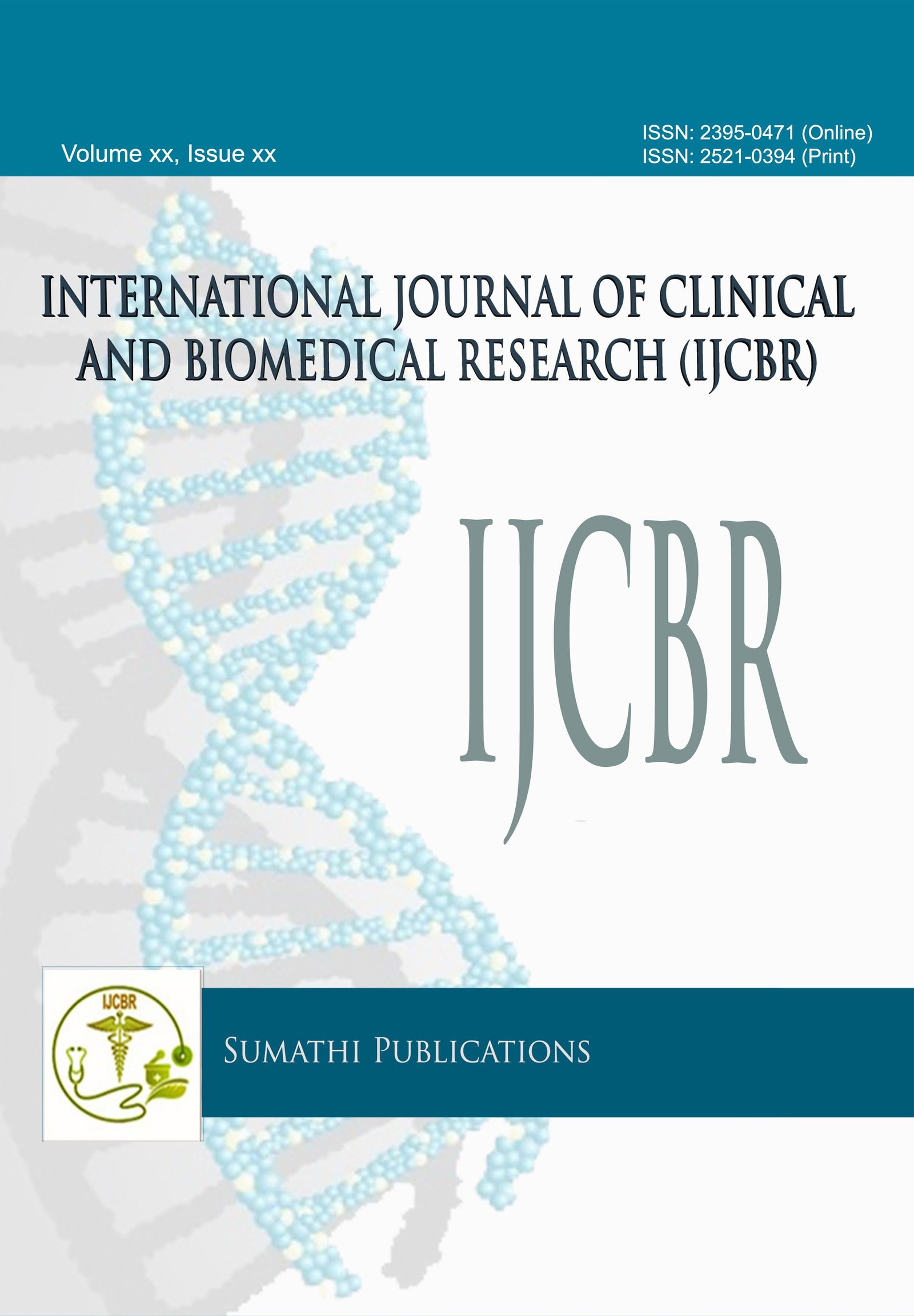CORRELATION OF ACSM'S WALKING EQUATION AND DIRECTLY MEASURED VO2MAX IN INDIAN POPULATION: A PILOT STUDY
DOI:
https://doi.org/10.5455/ijcbr.2017.33.09Abstract
Purpose of study: American College of Sports and Medicine equation is applied in many cardiovascular centers and sports medicine laboratory. It is used in majority of the commercial software available for exercise testing ACSM has published several metabolic equations for the indirect estimation of VO2max. So the purpose of the study was to find the applicability of ACSM walking equation in Indian population. Aim and Objective: To find out the correlation between actual VO2max and predicted VO2max 18-25 years female in Nagpur. Methodology: All the participants were selected according to sample of convenience and given a thorough explanation of the procedure in the language they understand. Each participant signed written informed consent before participating in the study in the language they could comprehend. Subjects were screened on the basis of selection criteria and PAR-q & you questionnaire. Total 20 participants were selected and demographic and anthropometric data was recorded. In this VO2 max was calculated directly by gas analyzer using AD instrument and indirectly by ACSM's walking equation and data was analyzed. Result: The mean and standard deviation of directly measured VO2max (ml/kg/min) is 8.6354 and ±4.5557 this shows the range of VO2max for the studied population and VO2max predicted by ACSM walking equation is 38.1891 and ±5.4691. The pearson's correlation for direct and indirect measurement of VO2max suggested that there is no co-relations with the value (r=0.11, p=, 0.05). Conclusion: The present study concluded that there is no correlation between actual and predicted VO2 max in the studied population and need to develop new regression equation for studied population i.e;ACSM equation is not applicable to the studied population.
KEY WORDS: American College of Sports and Medicine walking equation; VO2 max; Indian population.
Downloads
Downloads
Published
Issue
Section
License
The journal allows the author(s) to hold the copyright without restrictions and will retain publishing rights without restrictions.
The submitted papers are assumed to contain no proprietary material unprotected by patent or patent application; responsibility for technical content and for protection of proprietary material rests solely with the author(s) and their organizations and is not the responsibility of the journal. The main (first/corresponding) author is responsible for ensuring that the article has been seen and approved by all the other authors. It is the responsibility of the author to obtain all necessary copyright release permissions for the use of any copyrighted materials in the manuscript prior to the submission.
What are my rights as an author?
It is important to check the policy for the journal to which you are submitting or publishing to establish your rights as
Author. Journal's standard policies allow the following re-use rights:
- The journal allows the author(s) to hold the copyright without restrictions.
- The journal allows the author(s) to obtain publishing rights without restrictions.
- You may do whatever you wish with the version of the article you submitted to the journal.
- Once the article has been accepted for publication, you may post the accepted version of the article on your own personal website, your department's website or the repository of your institution without any restrictions.
- You may not post the accepted version of the article in any repository other than those listed above (i.e. you may not deposit in the repository of another institution or a subject-matter repository) until 12 months after publication of the article in the journal.
- You may use the published article for your own teaching needs or to supply on an individual basis to research colleagues, provided that such supply is not for commercial purposes.









